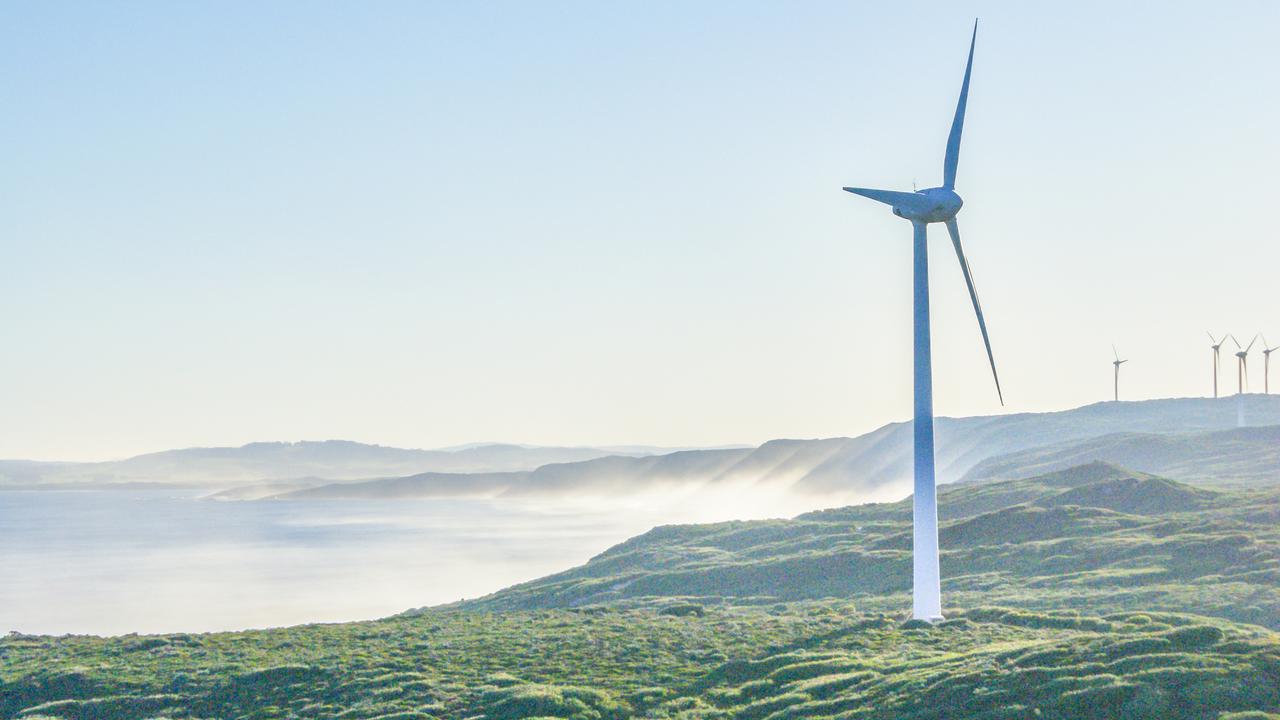Climate outpost of Cape Grim a breath of fresh air in carbon debate
FLOODING rains and cyclones have spawned a nation of weather obsessed do-it-yourself forecasters.

FLOODING rains and cyclones have spawned a nation of weather obsessed do-it-yourself forecasters, pushing traffic on the Bureau of Meteorology website to spike at more than five billion hits a month.
Surging waters in NSW and Victoria last week were expected to have produced a peak in online interest similar to the daily record of 639 million hits, when cyclone Yasi hit the north Queensland coast in February last year.
The public interest is a far cry from the days in the early 1970s when a team of young CSIRO scientists towed a caravan to Cape Grim, a windy outpost on a hill straddling Bass Strait and the Southern Ocean in Tasmania, to establish what has arguably become the world's most important weather station
Sunk low into the tussock grass cliffs, the Cape Grim Baseline Air Pollution Station has to survive frequent 160km/h winds and showers of foam from the boiling Southern Ocean waters 90m below. The officer in charge, Sam Cleland, says that in particularly violent storms the base station's rooftop is left littered with small rocks that cannot be explained.
On Wednesday, the Bureau of Meteorology and CSIRO will release their updated climate summary based on a review of the latest climate change data from stations including Cape Grim.
Cape Grim was named by Matthew Flinders in recognition of its black cliffs on his voyage to prove that Tasmania was an island, in 1798. Its remote location on the very northwest tip of Tasmania is Cape Grim's biggest asset.
It ensures the weather station receives the purest air possible after it has spent a week circulating and blending over the great Southern Ocean sink. Cape Grim's readings provide the benchmark for measuring the level of carbon dioxide in the southern hemisphere's atmosphere. A similar station in Hawaii does the same for the northern hemisphere but Cape Grim, Cleland says, can lay claim to the cleanest air in the world.
CSIRO chief research scientist Paul Fraser was one of the Cape Grim pioneers who would spend a week at a time in extreme conditions to take samples of the air. He says Australia's involvement came about because of a spur-of-the-moment decision by the Australian delegation at the 1972 Stockholm Convention.
"Australia put its hand up and said it would build one and later tried to get out of it," Fraser said.
"The question was would you put it in the tropics or would you put it in the mid-latitudes.
"We chose Tasmania and wanted to go a lot further south originally but once data started coming in, we realised you got into the roaring 40s here 40 per cent of the time so it really didn't matter where in Tasmania you put a station."
From a humble caravan, the station has grown into a purpose-built facility with a 75m telecom tower next door that doubles as an air sample collector.
Air from the top of the tower is fed into a series of instruments, including an unassuming electronic box in the centre of the main Cape Grim laboratory. The box has a screen, measuring about 23cm across, with a real-time read-out of the atmosphere's CO2 reading.
This week it was 387.19 parts per million.
According to Cleland, the standard base line is 388ppm, which is up from 330ppm when the Cape Grim station was first opened, and 275 that had remained constant for 2000 years until the start of the industrial revolution.
On top of the electronic box sits a porcelain dragon for "good luck".
Fraser says Cape Grim's air samples - or "air archive" - have proved to be an invaluable tool for climate scientists.
As well as measuring atmospheric carbon, Cape Grim has been at the forefront of successful global efforts to measure and reduce ozone-depleting gases.
And it is today helping to answer one of the great mysteries of climate change science: what makes clouds form.
Melita Keywood, senior research scientist, CSIRO Marine and Atmospheric Research, says clouds are one of the hardest things to simulate in climate models.
"There has always been a big discussion about how important aerosols are," she says. "But only in the past four or five years have the aerosol teams and the cloud teams been working together to try to understand cloud-aerosol interactions, which is one of the biggest uncertainties."
Many factors involved in forming clouds are still a mystery. "As we learn more about aerosols, we start to refine what we don't know," Keywood says.


